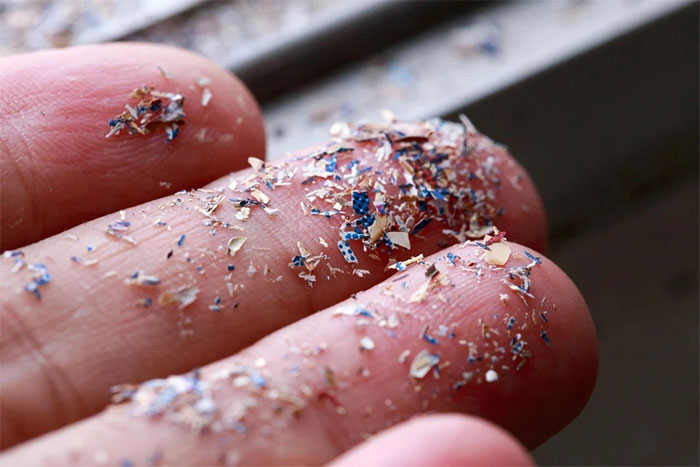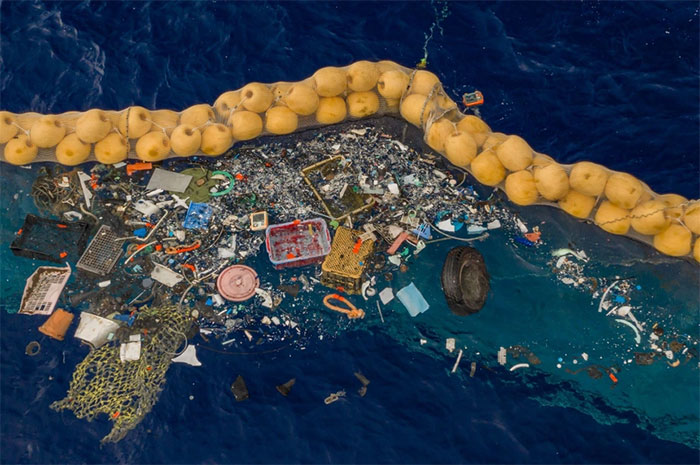Scientists have proven that microplastics are everywhere: in the air, in the oceans, and even within the human body for many years now.
From the depths of the ocean to the highest mountain peaks, there is no place free from plastic waste released by humans. We are even absorbing microplastic particles into our bodies while still not fully understanding the impacts on our health.
Images of plastic waste pollution have become familiar: a turtle suffocating on a plastic bag, water bottles washed ashore, or the area known as the “Great Pacific Garbage Patch” filled with floating plastic debris.
Millions of tons of plastic are produced each year, mostly from fossil fuels, and are directly released into the environment, breaking down into smaller plastic particles.
Microplastics in the Human Body
Jean-Francois Ghiglione, a researcher at the Microbial Oceanography Laboratory in France, stated: “Ten years ago, we could not imagine that there would be so many tiny microplastics, invisible to the naked eye, all around us. Finding microplastics in the human body is something we could not have conceived of.”

Microplastics have been discovered inside the human body. (Photo: iStockphoto).
Increasingly, scientific studies are finding microplastics in the human body, from “lungs, spleen, kidneys, and even the placenta,” Ghiglione told AFP.
Therefore, it is not shocking that we inhale these particles from the air, especially from tiny fibers from synthetic clothing.
Laura Sadofsky from Hull York Medical School in the UK noted: “We know that there are microplastics in the air and all around us.”
Her team has found PP (polypropylene) and PET (polyethylene terephthalate) in human lung tissue, identified from synthetic fabric fibers.
“What is surprising is the depth and size of those particles found in the lungs,” she told AFP.
In March 2022, another study demonstrated the first traces of PET in human blood.
With some blood samples from volunteers, scientists said it is still too early to draw conclusions, but remain concerned that if plastics are present in the blood, they could be transported to all organs in the body.
In 2021, researchers found microplastics in the placental tissue of both mothers and fetuses, raising concerns about potential consequences for fetal development.
Bart Koelmans, a professor of Aquatic Ecology and Water Quality at Wageningen University in the Netherlands, stated: “If you ask a scientist about the negative effects, they will say they don’t know. It could be a big problem, but we do not have scientific evidence to confirm the impacts, if any.”
One hypothesis suggests that microplastics may be responsible for some syndromes that impair human health.
Once scientists have confirmed the presence of microplastics in the body, it is likely that humans have been consuming, drinking, and inhaling plastics for many years.
In 2019, the World Wildlife Fund (WWF) released a shocking report estimating that humans are consuming and inhaling 5 grams of plastic per week, an amount sufficient to create a credit card.
Koelmans, who has debated the methodology and results of that study, calculated that this amount is only nearly equivalent to a grain of salt.
He told AFP: “Throughout a lifetime, one grain of salt per week is still okay.”
Inhaling Plastics for Years
While studies on human health are still ongoing, the harmful effects of microplastics on certain animal species are concerning.

The Great Pacific Garbage Patch continues to grow in size. (Photo: Shutterstock)
Ghiglione stated: “The ultra-small microplastics are harmful to all animal species we have studied in marine or terrestrial environments.”
He added that the series of chemicals found in many materials—dyes, stabilizers, flame retardants—can affect growth, metabolism, blood sugar levels, blood pressure, and even reproduction.
He emphasized the need for solutions, encouraging consumers to reduce their use of plastic products, especially bottles.
Earlier this year, the United Nations began developing a binding international treaty to address global plastic pollution.
They warned that the world is facing a pollution crisis that aligns with the biodiversity crisis and the climate crisis.
While the health impacts of plastics remain undetermined, experts from the Lancet Commission on Pollution and Health estimate that environmental pollution caused 6.7 million premature deaths in 2019.
Approximately 460 million tons of plastic were used in 2019, more than double the amount from 20 years prior. Less than 10% of that was recycled.
The Organisation for Economic Co-operation and Development (OECD) stated that the annual production of plastic made from fossil fuels is expected to peak at 1.2 billion tons by 2060, with waste exceeding 1 billion tons.
Koelmans remarked: “People cannot stop breathing, so even if you change your eating habits, you will still inhale them.”
“Because they are everywhere.”

















































